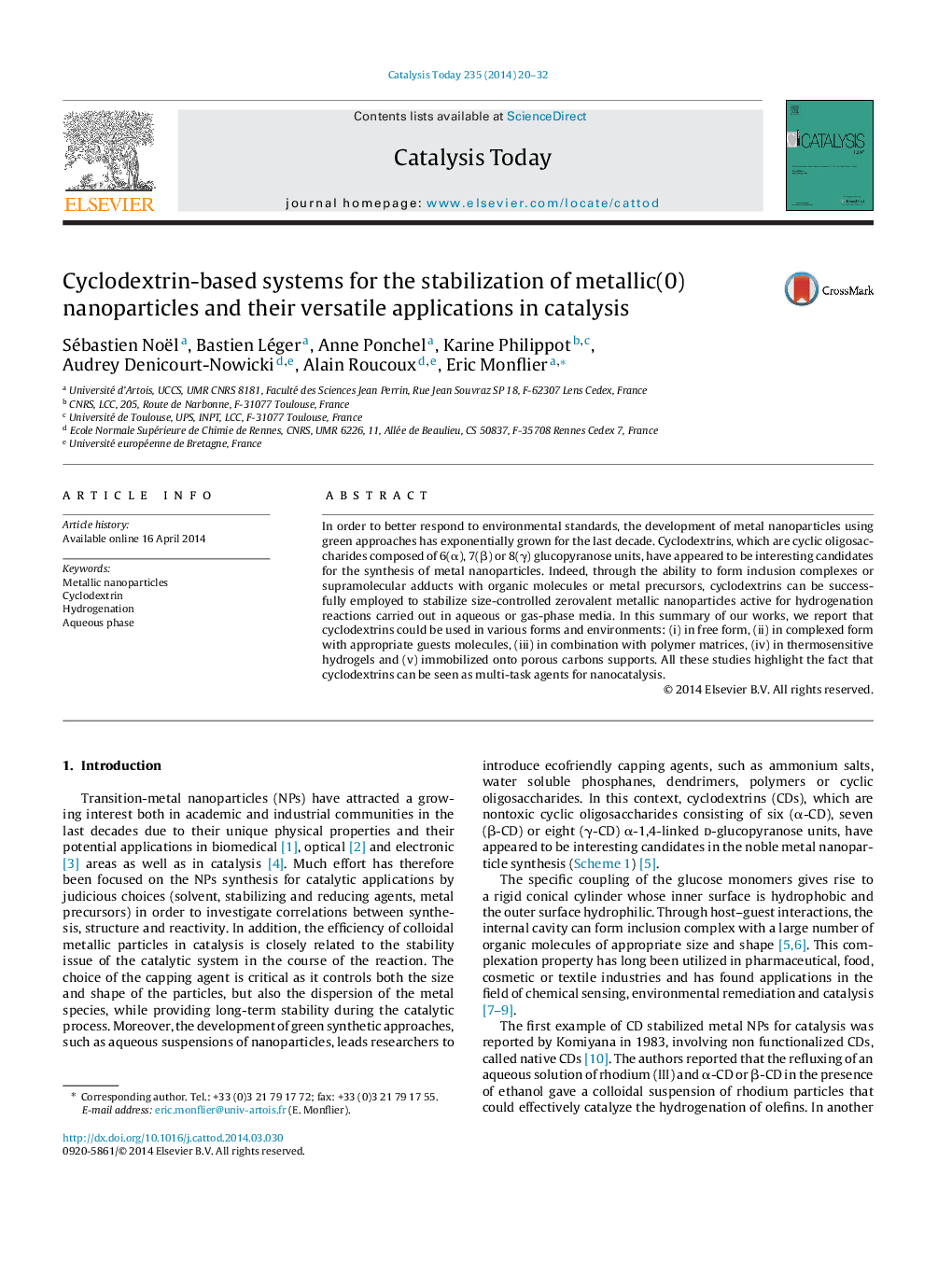| Article ID | Journal | Published Year | Pages | File Type |
|---|---|---|---|---|
| 54673 | Catalysis Today | 2014 | 13 Pages |
•Summary of our works concerning original synthesis of metal nanoparticles stabilized by cyclodextrin based systems in water for hydrogenation reactions.•Multi functionality of cyclodextrins, from colloids synthesis to catalytic applications.•Improved catalytic systems in terms of activity, selectivity and recyclability in the presence of cyclodextrins.
In order to better respond to environmental standards, the development of metal nanoparticles using green approaches has exponentially grown for the last decade. Cyclodextrins, which are cyclic oligosaccharides composed of 6(α), 7(β) or 8(γ) glucopyranose units, have appeared to be interesting candidates for the synthesis of metal nanoparticles. Indeed, through the ability to form inclusion complexes or supramolecular adducts with organic molecules or metal precursors, cyclodextrins can be successfully employed to stabilize size-controlled zerovalent metallic nanoparticles active for hydrogenation reactions carried out in aqueous or gas-phase media. In this summary of our works, we report that cyclodextrins could be used in various forms and environments: (i) in free form, (ii) in complexed form with appropriate guests molecules, (iii) in combination with polymer matrices, (iv) in thermosensitive hydrogels and (v) immobilized onto porous carbons supports. All these studies highlight the fact that cyclodextrins can be seen as multi-task agents for nanocatalysis.
Graphical abstractFigure optionsDownload full-size imageDownload high-quality image (73 K)Download as PowerPoint slide
